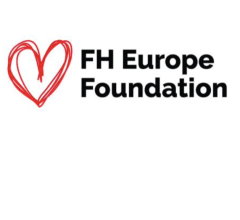
September 11, 2012 — Since the previous consensus document was published in 2007, catheter and surgical ablation of atrial fibrilliation (AF) have become standard treatments and more randomized trials of ablation versus optimal drug therapy for AF have been conducted. “Significantly more data exist on techniques, success rates and complications of these new interventions, making this a more valid document compared to 2007,” said Professor Karl Heinz Kuck of Germany, president-elect of the European Heart Rhythm Association (EHRA) and co-chair of the task force that developed the latest document.
“Data from randomized trials clearly indicate that catheter ablation is superior to any drug treatment for recurrences of AF and quality of life. But the long term outcome is not as good as we thought in 2007,” added Kuck.
Newly analyzed data on the long-term outcome after successful ablation of long-standing persistent AF shows that just 40 to 50 percent of patients remain free of recurrent AF after five years. The increased volume of data enabled the authors to calculate minimum acceptable success rates for the different types of AF for the first time. Success was defined as freedom from AF, atrial flutter (AFL) and atrial tachycardia (AT) and no antiarrhythmic drug therapy. At 12 months following the ablation procedure, the minimum acceptable success rates are 50 percent for paroxysmal AF, 40 percent for persistent AF and 30 percent for longstanding persistent AF.
Also for the first time, the authors state that the maximum overall complication rate should be in the region of 4.5 percent. “For an invasive procedure, you want to know how successful it is but you also want to know how risky is it,” said Kuck. “In this paper we clearly define the maximum overall complication rate so that patients can see if an institute is performing adequately.”
Standards are clearly set out for the design of clinical trials. The minimum set of data that should be published is outlined, along with the endpoints and definitions that should be used. “This should increase standardization of trials and enable researchers, patients and organizations to compare success and complication rates more easily,” said Kuck.
Another new feature in the 2012 document is a recommendation to perform catheter ablation in patients with paroxysmal AF and no or minimal underlying heart disease as a first-line treatment. Previous recommendations said these patients should first receive an anti-arrhythmic drug and only proceed to catheter ablation if the drug failed.
“This comprehensive state-of-the-art review of the field of catheter and surgical ablation of AF sets out standards for success rates, complication rates and clinical trial design. This will help patients, doctors, researchers and organizations to see which doctors and institutions are up to scratch and where improvements are needed,” concluded Kuck.
“Forty-five experts from around the world representing seven different organizations have come together to develop a consensus for successful catheter and surgical ablation of atrial fibrillation. It is our hope that this guidance will help to ensure that patients seeking treatment will receive high quality care regardless of where they live and also bring us one step closer to ending pain and suffering due to heart rhythm disorders,” said Anne M. Gillis, M.D., FHRS, president of Heart Rhythm Society.
For more information: www.hrsonline.org


 November 12, 2025
November 12, 2025 









